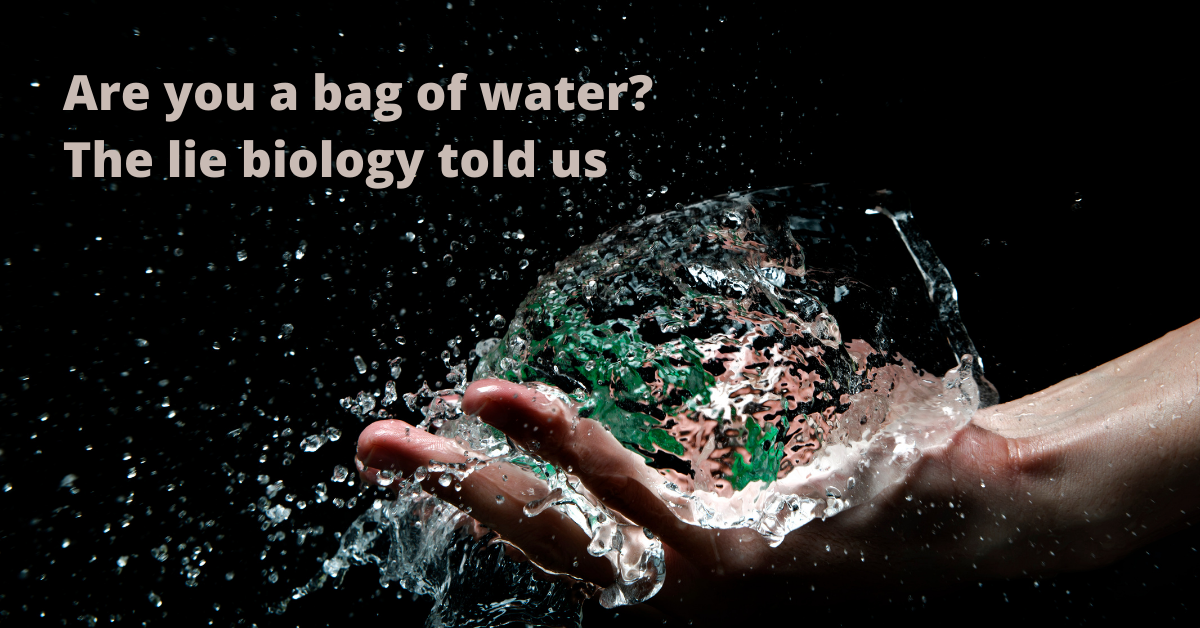The little white lie biology told us and what that has to do with the relationship between chemical and mechanical and our understanding of ourselves.
“Is it alive?”

How do we know something is living? This might sound like a silly question, but it’s an important one for philosophers and biologists because life on earth is weird and surprising.
There are non-living things on the face of the planet that act like they are alive.
Crystals and their ability to grow and spawn large structures overnight are one of these non-living things that appear living.
And there are living things that appear so outside our understanding of what’s living, that it can fool us into thinking they are non-living.
Coral are one example of something living, that at first glance, seems almost alien to be non-living.
Biologist have five major criteria for something to be living.
One of those criteria is “motility” — or the ability to move independently.
Motility or motion is a sign of life.
And some physiologists have gone so far as to say “Motion is life,” or sometimes “Life is motion.”
Motion in response to sensation
This is Fundamental #3 of our Fundamentals of Modern Chiropractic Series. If you remember, Fundamental #1 is “Without stimuli we die” and Fundamental #2 is “Life is a complex experience of input –> output… or you could say stimulus –> response
Or put another way:
Sensation ->Perception ->Integration ->Response
Important to chiropractic patients, spinal injury and misalignment can affect this sequence at all levels.
So how does this response to sensation happen?
Put simply: motion.
This may sound surprising because in our current understanding of thing we place a lot of emphasis on chemistry.
We understand that things happens inside at a chemical level, and so if we want to change what happens inside us, we’re going to be talking chemicals…our reliance on pharmaceuticals orients us to the chemical understanding.
But that’s only half the story.
The chemistry of motion?

Because chemistry doesn’t go far without creating motion. And motion influences chemistry.
Okay — so what do we really mean? Why should this matter to me?
Well, if you’ve ever tried to spend a day of your life sitting completely still, you know how hard that is. Human survival is dependent on the ability to move.
But, there’s something deeper going on.
Motion is expansion and contraction. And expansion and contraction is the repetition of pushing and pulling…Tension and compression rising and falling. At its base levels it is protein filaments hooking and unhooking, moving past each other, sometimes holding hands, sometimes letting go. Expansion and contraction.
Food moving into our body? Expansion and contraction.
Toxins moving out of our body? Expansion and contraction.
Gripping the top of a pickle jar? Expansion and contraction
Long muscles create tension and compression that allow us to move in the world. And round muscles create tension and compression that allow things to move within us.
But this tension and compression goes deeper and smaller than just the muscle attaching to bone.
The “bag of water” little white lie

In the past we used to view cells as bags of mostly water and chemicals. (Or at least the common way to teach basic cell function was to envision the cell as a bag of fluid.)
But now we know that cells aren’t just bags of water, but they have their own skeleton (cytoskeleton), and that skeleton has its own contractile tissue (like muscle) called microfibrils or protein filaments.
The kind of structures that hold you together and upright in gravity, walking around in the world, are also inside your individual cells, helping them resist external forces, allowing them to move, and contributing to their very function.
This requires the converting of mechanical energy or stimulation into electrical and chemical responses and then turning them back into mechanical movement.
This process is called mechanotransduction.
Motion isn’t just something that happens outside the cell, but also inside the cell. With push-pull…Expansion and contraction against an internal skeleton.
The principle that links your ability to hold a big metal spatula in front of a grill on a summer afternoon, seeming to float on two legs without falling down, is the same principle that keeps our DNA inside our cells anchored and suspended to its own protective membrane (in other words “floating without falling down”).
Motion and chemistry relies on pushing and pulling in a tension-compression system
How do we respond to stimuli?
Motion.
And what is motion? A complex action of expansion and contraction, a coordination of pushing-and pulling in a tension-compression system that stretches from the inside of our individual cells all the way up to our beefy biceps, hamstrings, and our back muscles.
Mechanical is chemical. And chemical is mechanical.
Mechanical stress has chemical consequences. And chemical stress has mechanical consequences.
When this sinks into our brains, it will revolutionize our understanding of how we can transform our health.
- Announcing the Winter Boot Drive of 2024 (to benefit homeless) - December 16, 2023
- Thoughts determine the quality of life – Tips for new patients (Part 8) - September 18, 2023
- Why hasn’t anyone told this to me before? Tips for new patients (Part 7) - September 18, 2023


